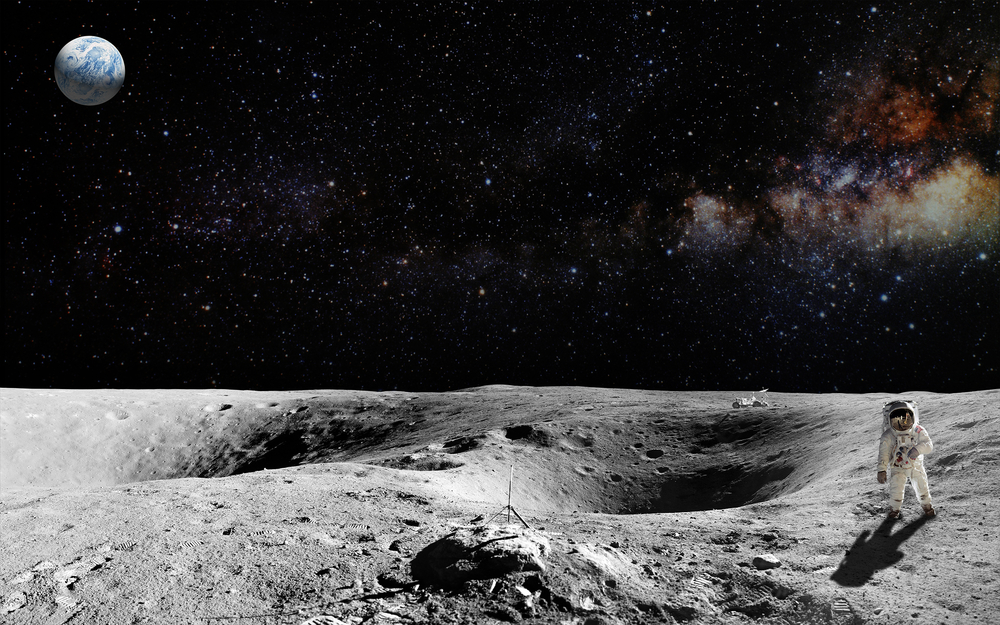NASA and the U.S. Space Force collaborate to ensure that the global commons of space are safe, can be utilized for future discovery, and can have an adequate level of situational awareness for safe operations. With this ensured, the moon is again within reach. And Mars, enabled by new lunar possibilities and space partnerships, may see its first human explorers.
 In a recent Space Power Forum hosted by the Mitchell Institute, NASA Administrator, Jim Bridentsine, and Chief of Space Operations for the U.S. Space Force, General John “Jay” Raymond, discussed the intricacies of the space domain and the future of space exploration. The two agencies, despite having distinctly separate missions, collaborate and bolster the work of each other, requiring that both Administrator Bridenstine and Gen. Raymond interact and rely on the others’ ongoing work. Together, they have a complete picture of both the current situation in space and the path that the U.S. government and military look to forge in the areas of space domain defense and exploration.
In a recent Space Power Forum hosted by the Mitchell Institute, NASA Administrator, Jim Bridentsine, and Chief of Space Operations for the U.S. Space Force, General John “Jay” Raymond, discussed the intricacies of the space domain and the future of space exploration. The two agencies, despite having distinctly separate missions, collaborate and bolster the work of each other, requiring that both Administrator Bridenstine and Gen. Raymond interact and rely on the others’ ongoing work. Together, they have a complete picture of both the current situation in space and the path that the U.S. government and military look to forge in the areas of space domain defense and exploration.
“We share the same goal of having norms of behavior to drive safe and professional behavior in the space domain…one of the things that I’m most proud of in the first nine months of the existence of the U.S. Space Force is how far we have come on developing partnerships with our allied partners,” Gen. Raymond elaborated. “The Outer Space Treaty is a key component of these partnerships. It makes countries responsible for their actions in space and it prohibits national appropriation of areas of space.“
A good example of the necessity of partnerships and space-based diplomacy is the International Space Station (ISS). Fifteen different countries share responsibility for the ISS, and 103 countries have had experiments on the ISS. Shared responsibility like this requires agreements and understandings between the parties involved. As Administrator Bridenstine explained, “We have currently over 700 active agreements with nations all around the world.”
Treaties and agreements between countries operating in the space domain allow for research and development on the ISS, and is opening the door to further visitation and exploration on the moon. This will begin with NASA’s recently announced and upcoming Artemis program, which will send astronauts back to the moon within the next five years. Artemis, in Greek mythology, is the twin sister of Apollo. And this mission will ensure a woman sets foot on the moon by 2024 with the goal of making commercial partnership and sustainable exploration possible by 2030.
This research and development is important for the goals of NASA. Administrator Bridenstine explained, “We have found hundreds of tons of water ice. Water ice is life support. It’s air to breathe. It’s water to drink. It’s also hydrogen. Hydrogen, of course, is the same rocket fuel that powered space shuttles…It’s hundreds of millions of tons of hydrogen on the surface of the moon. Let’s use it.” One of the longer-term goals of the Artemis program is to send astronauts to Mars. In order to do this, research and development of propulsion need to continue. And, now it will be able to be explored from beyond the atmosphere of Earth.
But there is another concern that faces both NASA and the Space Force in the space domain – congestion and debris.
With many satellites orbiting in MEO, LEO, and GEO, and with objects randomly traveling through space from beyond, situational awareness is a key function of the Space Force. “You have to understand what’s going on in the domain around you. And, you have to be able to navigate the precision navigation and timing. And so, all of those things out beyond what we have traditionally operated in, which is geosynchronous orbit and below, now are expanded. Again, this is enabled by a close partnership with NASA,” said Gen. Raymond.
With better understanding of the hazards of space operations, and exploration of new propulsion and sustainability from the lunar surface and the ISS, new horizons may be possible. If threats can be diminished through treaties, and situational awareness can be maintained, and new technologies can be established, once unreachable ideas may now be grasped. “The goal here is to be able to travel to Mars in a matter of months, maybe two or three months, not nine months…” Administrator Bridenstine confirmed.
From the moon, new technologies, and mined resources may give NASA the means to reach Mars and do something once unthinkable. And, it’s through diplomacy, exploration, and partnerships that this may be possible.
